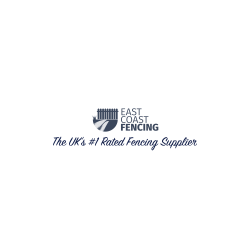Which Fence is Mine? A Comprehensive Guide to Understanding Property Boundaries

Property disputes can be taxing and lead to friction between neighbours. One of the most common issues that homeowners face relates to determining which fence on their property is theirs. In this guide, we will provide comprehensive information on how to identify your boundary lines and understand who is responsible for fences, hedges, and walls dividing properties.
Understanding Property Boundaries
To avoid disputes, it's critical you understand where your property lines lie. In the UK, the general principle is that property owners are responsible for the boundaries on the left-hand side as you look at it from the street facing the front of your property. However, this is more custom than law and can vary significantly between different areas and individual properties.
Check Your Deeds
The first step in determining which fence is yours is to check your property deeds. The deeds typically include a plan of the land and may use symbols to indicate who owns which boundary. For example, a “T” symbol pointing towards a property often means that the owner of that property is responsible for the boundary it touches. If the deeds aren't clear or if you don't have access to them, you might need to conduct a Land Registry check.
Land Registry
The Land Registry holds records of property boundaries in England and Wales. You can request a copy of your property's title register, which might include a ‘filed plan’ – a detailed map that outlines your property's boundaries. Note that while useful, these plans are not always definitive and typically show general boundaries rather than precise outlines.
Physical Survey
In cases where the documentation is unclear or disputed, a professional survey by a chartered surveyor can ascertain legal boundaries. This can be particularly useful if you're planning significant alterations or need to settle a boundary dispute formally.
Who is Responsible for the Maintenance?
Fences and Walls
Ownership usually infers maintenance responsibility. If the fence is owned by you, as indicated by property deeds or as determined by customary conventions (like the left-hand rule), then you are responsible for keeping it in good repair. Joint ownership is also possible, often indicated by boundary agreements or past actions indicating shared responsibility.
Hedges
Hedges usually sit on the boundary line and might be considered joint responsibility. However, if the hedge is clearly on one person's land, they would be responsible for maintenance. It is always ideal to have clear communication with neighbours regarding any joint maintenance efforts.
Solutions to Disputes
Effective communication is key to resolving boundary disputes. It is always best to try and come to a mutual agreement with your neighbour. If an agreement can’t be reached, mediation by a professional mediator can be a less adversarial and less expensive route than legal action. In extreme cases, involving solicitors and taking the dispute to court might be the only resolution but consider this a last resort due to the potential costs and impact on neighbourly relations.
Conclusion
Understanding which fence is yours can be a straightforward task if property deeds are clear and neighbours are cooperative. However, boundary disputes can be complex and stressful. To avoid confusion:
- Always start by checking your property deeds and/or conducting a Land Registry check.
- Consider a professional survey if documentation is unclear.
- Aim to resolve any disputes through communication or mediation before resorting to legal action.
By taking these steps, you can clarify any confusion over boundaries and maintain good relationships with your neighbours. Remember, property boundaries and responsibilities can vary, so it's always important to understand the specifics of your property and local laws.














Leave a Comment